Mylar Sails: When it all began
Published on March 8th, 2017
As laminate sails continue to evolve today, Robie Pierce shares this intimate story of when it all began.
Unbeknownst to most people, Mylar Sail technology was first introduced to the sailing world in 1955, by A. Russell Pierce Jr, then of South Dartmouth Massachusetts. Russ, as he was known to local sailors, was an inventor, textile engineer, and a local sailing legend in Southern Massachusetts. He was also my Dad.
Back in the 40s and 50s, he was the only one I was aware of who had new design sail shapes, other than Hood or Ratsey & Lapthorn. He carved a 20″ wooden template of the shape for a particular mainsail on which he would cut miniature panels on ordinary graph to the desired size and shape He and the local sail maker would then cut out the clear 1mm Mylar panels and glue them together on the loft floor.
I remember my early teenage years waiting in the car for hours at 3M research facility in Cambridge or the DuPont film laboratory in Brighton, both in Massachusetts, where he talked to chemists and “sticky” people. He persisted and with the help of 3M created one of the very first two-sided pressure sensitive adhesive ever available.
The first Mylar sail ever made was for the 13-foot Tech Dinghy. This first prototype was very fast and unique indeed with zero stretch, a glasslike finish, and constant designed shape. The sail proved so fast, with legendary Dan Strohmeyer at the helm, that it was banned from the Larchmont frostbite fleet after just one weekend.
Sail size limitations in those days were restricted to relatively small sails, about 100 square feet, because of the strength limitation of the glue. A number of designs were made for the Sunfish/Sailfish.
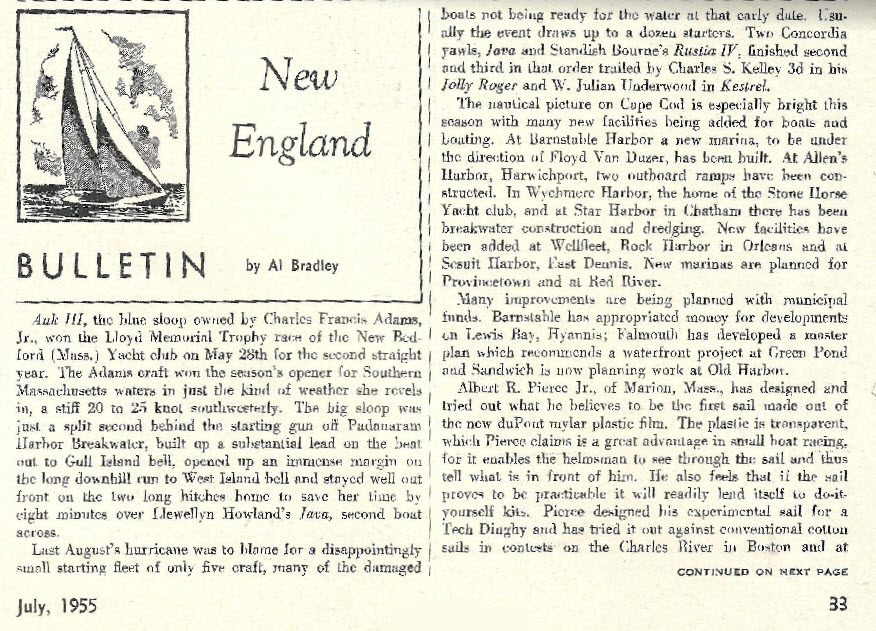 The two major limitations to the clear Mylar were the terrible noise it made every time the sail luffed and the glaring sunlight that would magnify through the sail. Your eyes and body couldn’t handle it for long with no place for shade. Also little things, like storing in a sail bag was impossible.
The two major limitations to the clear Mylar were the terrible noise it made every time the sail luffed and the glaring sunlight that would magnify through the sail. Your eyes and body couldn’t handle it for long with no place for shade. Also little things, like storing in a sail bag was impossible.
As a true inventor that he was, Russ accomplished what he wanted and moved on to his next invention. In the meantime, industry legends like Lowell North picked up this early work and succeeded in laminating dacron and Mylar together.
This was revealed to most of us in 1977 when Lowell’s America’s Cup team Enterprise displayed its Mylar-reinforced green ‘garbage bag’ genoas. While the team failed to be chosen as the defender, this obviously did not hasten the development to where we are today.
But it all started 62 years ago with a clever guy and his curious mind.


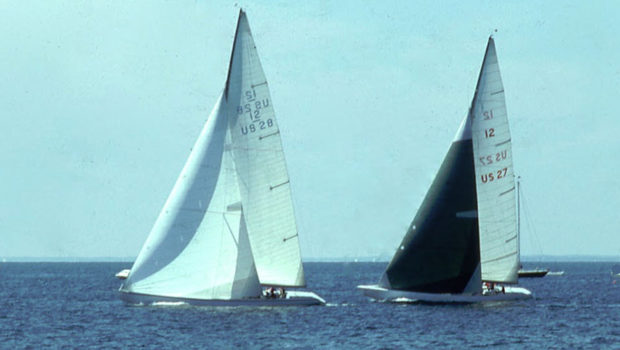
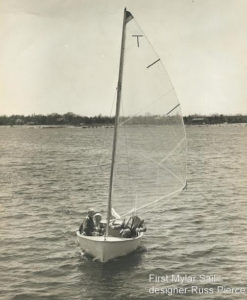


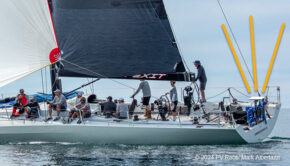
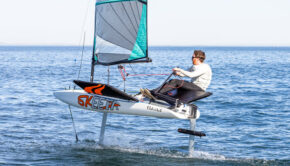
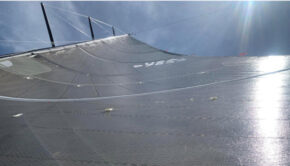
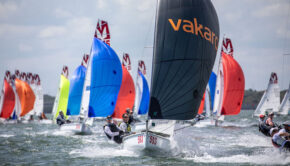
 We’ll keep your information safe.
We’ll keep your information safe.